Photography and Get To Know Koksi
The Koksi beetle is one of the small animals of the Coleoptera order. They are easily recognizable because of their small round appearance and colourful backs and on some speckled species. Ladybugs source
According to my knowledge abroad, this animal is known as ladybird or ladybug.
Ordinary people call the beetle Koksi as a ladybird because its size and shield are also hard, but this beetle is not at all from the nation of Ladybug (Hemiptera). Koksi beetle source
These beetles are found throughout the world, especially in areas where plant life provides food. In this world, there are approximately 5,000 species and the largest body length reaches almost 1 cm.
The Colour Section Anatomy of Koksi
The Koksi beetle has a fairly distinctive appearance that is easily distinguishable from other insects. His body was almost round with a pair of hard wings on his back.
The hard wings on his back are colourful but are generally prominent in colour plus a pattern like spots. The colourful wing is actually the wing of elite or the front wing.
The rear wing is transparent in colour and is usually folded under the front wing when not in use. While flying, he flaps his rear wing quickly, while his rigid front wing can not flap and stretch to increase lift. Its harsh front wing can also function like a protective shield.
The foot Section of Koksi
The Koksi beetle has short legs and a head that looks bent down. A head position like this helps when feeding small animals like aphids
At his feet are microscopic smooth hairs (only visible with a microscope) that ends like a spoon. This hair produces a sticky oily material so the ladybirds can walk and stick in difficult places like in glass or in the ceiling.
The Food section of Koksi
The majority of the ladybirds are carnivores that feed on small plants such as aphids (aphids). Adult larvae and bugs of the same species usually eat the same foods. Ladybugs by sucking the bodily fluids of their prey.
In his head, there is a pair of mandibles to help him hold his prey while eating. He then pierced the body of his prey with a special tube in his mouth to inject digestive enzymes into the body of its prey, then suck the body tissue of its prey which is liquid. A ladybug is known to spend 1,000 heads of aphids throughout his life.
Several types of ladybirds such as the Japanese ladybugs and ladybirds of Epilachna Admirabilis species are known to be herbivores for eating a leaf. Ladybugs usually leave a distinctive imprint on their food leaves because they do not eat their leaf veins.
The Part Hibernation and Behaviour of Koksi
Like most insects and animals, the Koksi ladybirds in the four seasons also do hibernation (long sleep in the winter).
Ladybugs of cocks usually congregate in large quantities in places such as under wooden beams, stem barks, or heaps of leaves while hibernating. During that long sleeping period, they persist by utilizing the food supply in their bodies.
The Part Self Defense of Koksi
Animals that prey on ladybirds are generally predatory animals such as birds and spiders. Ladybugs have a unique way of defending themselves.
If you feel threatened, he will pretend to die by turning around and pulling his legs inside. As a further protection mechanism, he will remove the yellow liquid from the joints of his legs.
This liquid has a bad smell and taste so that if it works, the predator does not eat because it can not stand with the liquid. In the leaf-feeding ladybird, the newly spawn female in a plant leaves a bite pattern on the leaves so that no other females lay eggs in the same plant.
In the four seasons, if the female bugs do not find a suitable plant until winter, the female bug will delay the release of its eggs until the winter is over.
Ladybugs as members of the Coleoptera order (beetles) undergo a perfect metamorphosis: eggs, larvae, pupae, and adulthood. The oven egg is oval and yellow.
These eggs usually hatch about a week after they are first expelled. Larva larvae generally have a long-bodied appearance, covered with feathers, and legged six. These larvae live by eating according to their parent food and as they grow larger, they make a skin change.
Larvae that have been up to a certain size will then stop eating and enter the cocoon phase at the age of two weeks from the first hatch.
This cocoon usually attaches to objects such as leaves or twigs and is yellow and black. Ladybugs will then come out of the cocoon after about a week.
The new lady's outward wings are still fragile and pale yellow, so he will be silent for a moment to tighten his wings before starting the move.
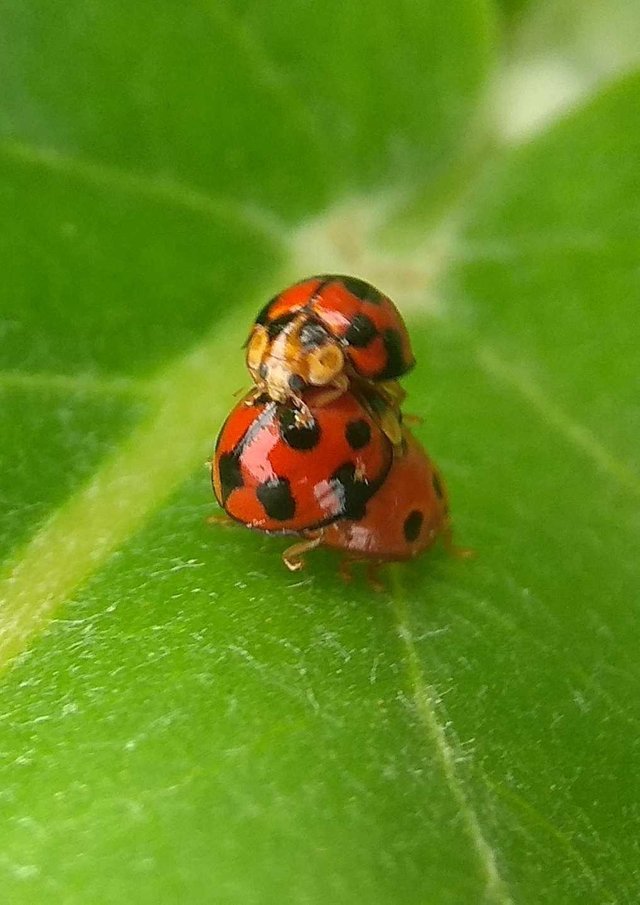
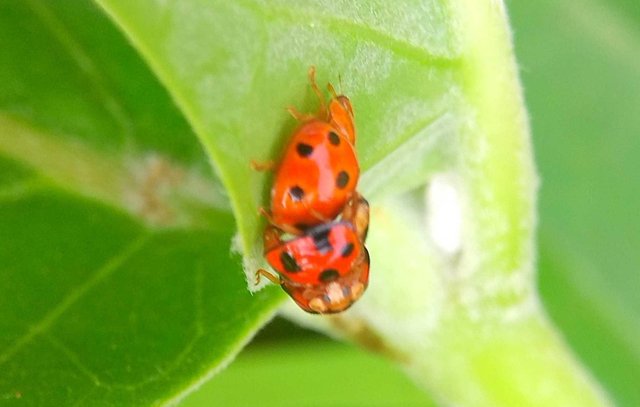

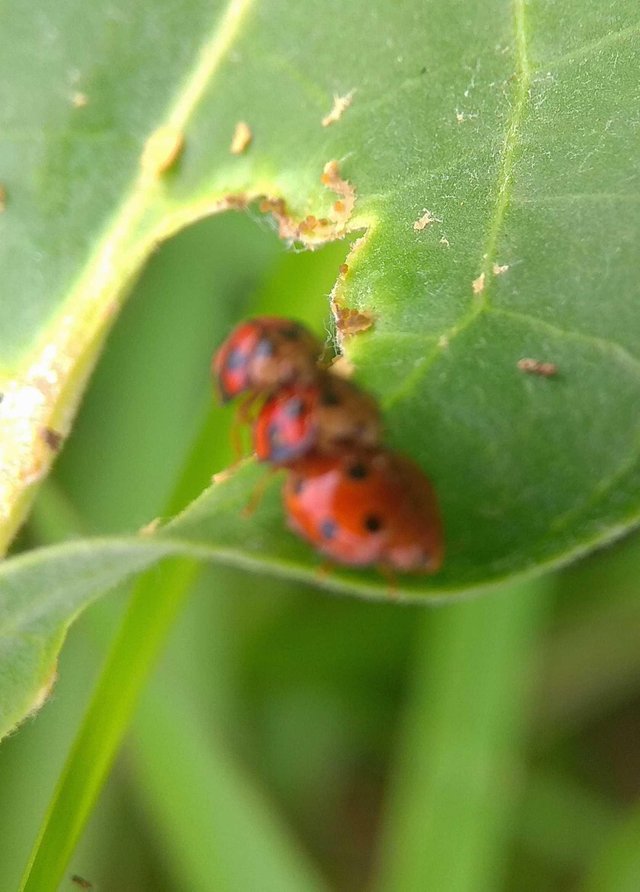
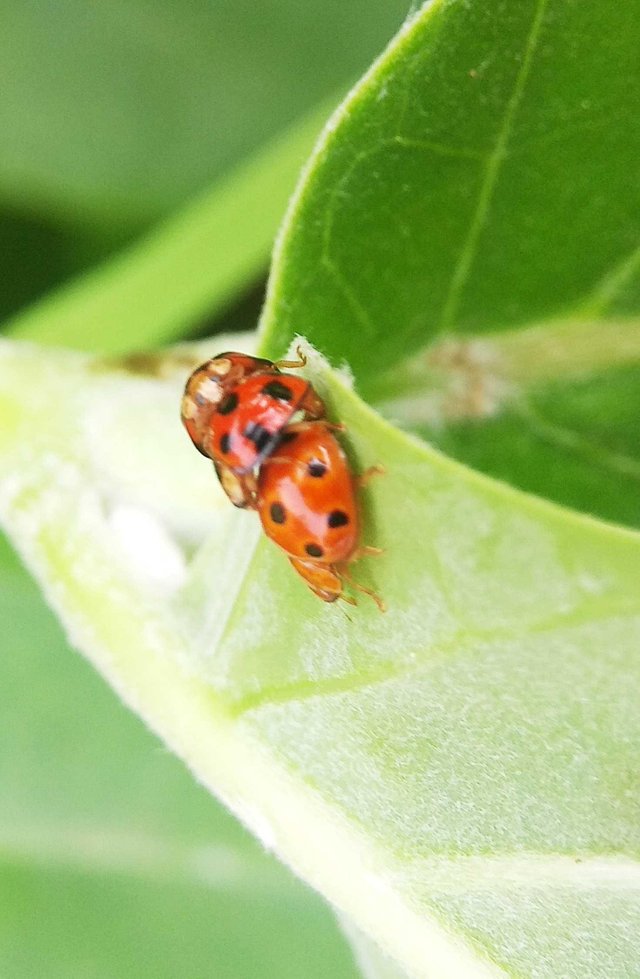
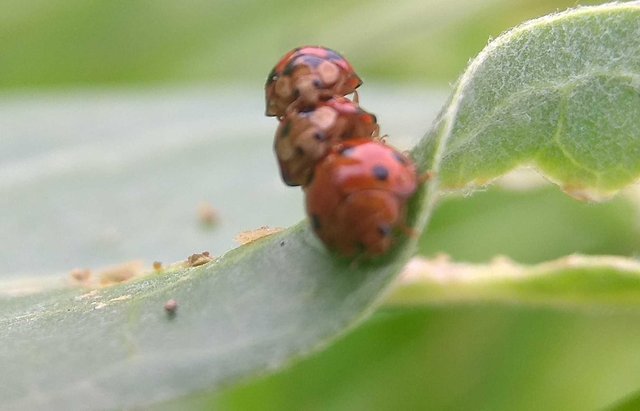
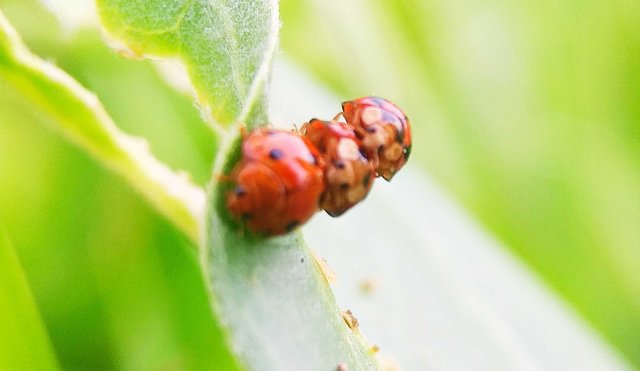
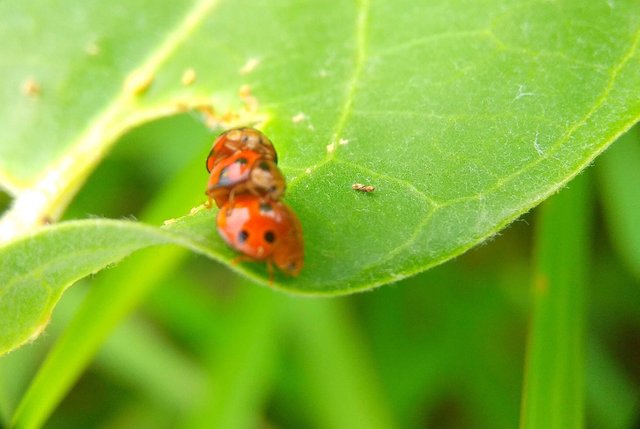
Thank you for your contribution to the "photocircle" tag
Cheers,
@photocircle Team
Check out this post for information on all the Photocircle tags
Learn about this photo curation project by clicking >here
To stop receiving comments then reply
!STOP!